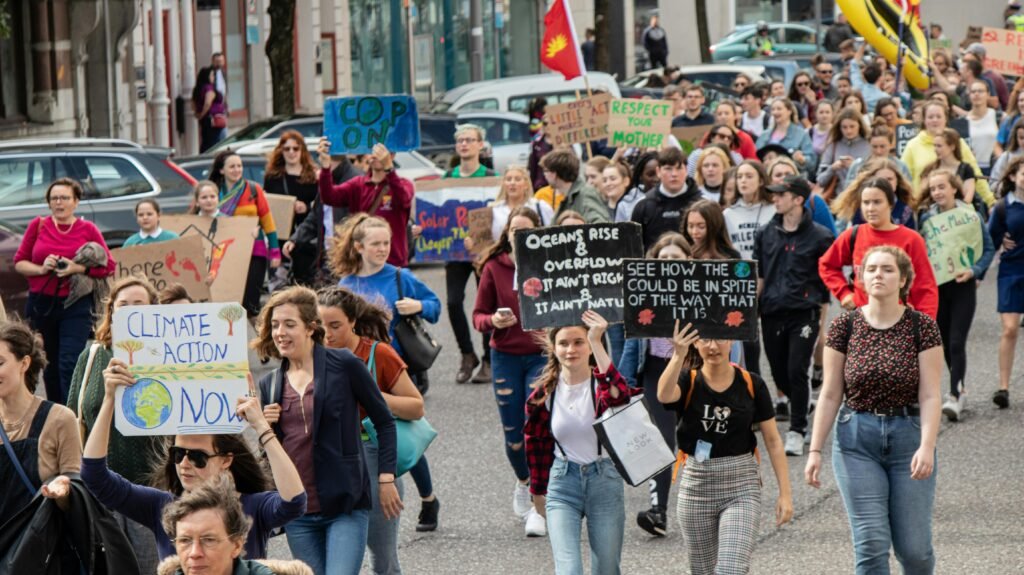Cumulatively the conference will go down in history as an extraordinary exhibition of international unity, wherein the historical decisions made are the main features for action on climate change this time around. The conference convened world leaders in NYC, as harsh realities of rise in temperature- including extreme weather, sea-level rise, and loss of biodiversity- are taking their course; this summit is probably a watershed moment in the struggle against climate change, with important commitments regarding fast-tracked carbon emissions reduction, renewable energy investment, and expanded climate-resilience initiatives.
A Moment to Think While It Is Still Possible

High up on the list of notable events in recent decades has been a spate of natural disasters emanating from climate change. From raging blazes in Australia and California to the disastrous floods in South Asia, the telltale signs of a faltering climate are placed out before us for us to see. For quite some time, scientists have predicted that we are gliding towards a serious tipping point—one, beyond which the planet is likely to experience irreversible damage. The most recent report from the Intergovernmental Panel on Climate Change (IPCC) has confirmed these fears prompting immediate global action to avoid pushing global warming above 1.5°C above pre-industrial levels.
Being held with such a dismal backdrop, the summit was a platform for world-leaders to show that they were ready to take a head-on approach towards their existential threat. Though it has taken time in the years past, this year’s commitments indicate a paradigm shift in how countries view their responsibilities to the planet and to future generations.
Key Takeaways from The Summit
Commitment to Net-Zero Emissions by 2050
More than 80 nations pledged during the summit that they would strive for net-zero carbon emissions by the year 2050. Alongside this ambitious goal, countries are committing to make interim targets to cut emissions by 50% by 2030. Again, these pledges are buttressed by compelling commitments to green technology adoption, investment in carbon capture, and scaling up sustainable practices across the agricultural, transport, and manufacturing sectors.
Transformational $1 Trillion Climate Fund in Aid to Developing Countries
Developed countries recently agreed on pledging a fund of about $1 trillion to assist the world’s most vulnerable nations at the complete crux of the climate war, facing high-temperature stress and extreme weather. Well-off nations will have to come across the offered fiscal parasitism worth $1 trillion over a decade– This will support renewable energy, green infrastructure, and disaster rehabilitation across Global South.
Transitioning to Global Renewable Energy
The summit was largely about switching to renewable energy with over 100 countries signing towards 100% clean energy grids by 2040. With government pledges dismantling fossil fuel subsidies as well as investing in developing green technology, this transition expects rearranging energy storage, grid management, and multiplication in multilateralisms to interconnect security across borders.
Plans to Strengthen Climate Adaptation and Resilience
Moreover, policy space intervened much more than climate mitigation, reflecting adaptation in communities exposed to climate change impacts. Such populations include coastal cities under threat from rising seas, drought-stricken areas, and flood-prone regions.
Roadmap for Implementation, Making Leaders Accountable
The promises made at the summit should be noted with praise, but the experts wish to delve into the fact that the groundwork required to keep these promises is the most arduous task. The climate crisis requires unprecedented coordination, investment, and innovation. Continued monitoring of each country’s progress with sanctions threatened against those failing to meet CTOM targets will be key to converting the promises into action.
An adequate monitoring and reporting framework that will require each country to track emissions reduction and renewable energy uptake along with other measures of climate resilience has been proposed. Sanctions and trade barriers could still be applied to any countries that do not meet the targets. The participation of the private sector in funding and sustaining projects for sustainable development is expected to be heavy.
Apart from government action, there is growing recognition that public-private partnerships will accelerate the development and deployment of clean technologies. The energy, transportation, and technology sectors have begun investing in solutions that will help scale climate action, but their cooperation will prove critical as governments start imposing stricter policy regimes on climate.
Onward: Challenges and Hopes
But hope still does cling to the agreements made during the summit. Serious hurdles to massive decarbonization confront the world: powerful fossil fuel companies and, in some countries, political opposition. The new green standards will also require some adjustment in the global economy. This is disruptive to some industries and poses some new economic risks.
Still, a difference with the climate summits that have come before it is one of urgency.
The disastrous effects of climate change are no longer hypothetical; they no longer reside in the realm of what is possible. The Paris Agreement commitments made in 2025 inspire a ray of light that it may still be possible, given appropriate political will, technology, and world cooperation, to prevent the worst effects of climate change.
As those in power return to their own nations, attention will naturally turn to whether they have the political will to see their promises through and take the needed steps to protect the future of the planet. This coming decade will be most critical, as it is at the holding point where it could mark the difference between whether humanity charts a course of sustainability or suffers from reckless negligence.



